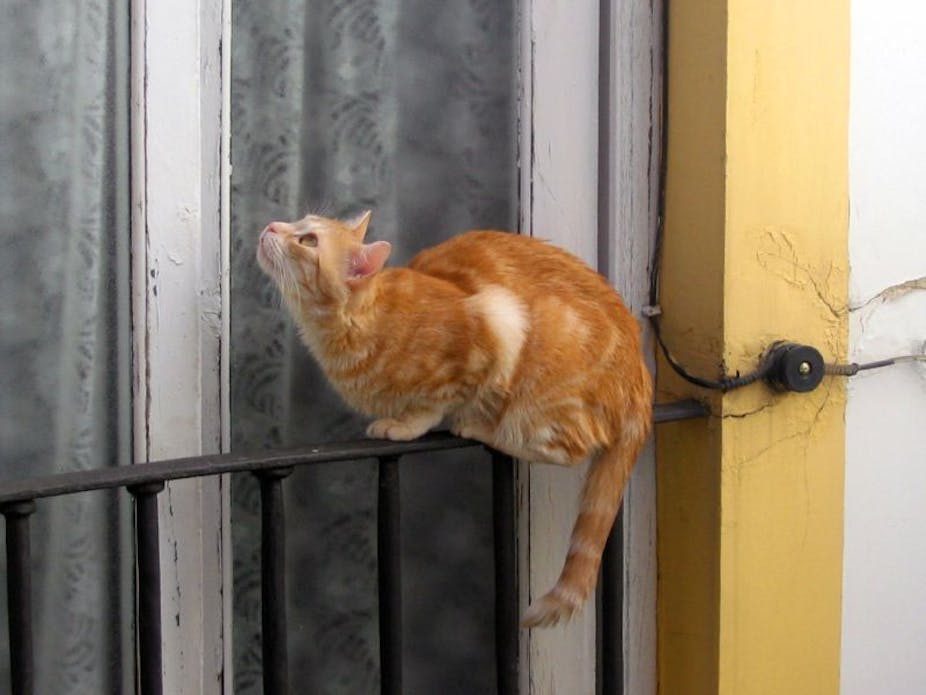In “The Tragedy of Pudd’nhead Wilson”, Mark Twain equated keeping a cat to domestic bliss:
When there was room on the ledge outside of the pots and boxes for a cat, the cat was there – in sunny weather – stretched at full length, asleep and blissful, with her furry belly to the sun and a paw curved over her nose. Then that house was complete, and its contentment and peace were made manifest to the world by this symbol, whose testimony is infallible. A home without a cat – and a well-fed, well-petted and properly revered cat – may be a perfect home, perhaps, but how can it prove title?
But not all pet cats sleep innocently in the sun all day. Many are accomplished hunters at some point in their lives. The cumulative effect of their occasional hunting is substantial wildlife mortality.

Cats are renowned for bringing their prey home to their owners. Researchers have exploited this habit, using it to calculate predation mortality in local communities. By extrapolating the results, they calculated mortalities at a national level. These rough estimates suggest that pet cats kill 29.2 million birds and 57.4 million mammals annually in the UK, and 100 million birds annually in the USA.
In Australia, the type and number of prey taken vary with location. In warmer climates lizards are common prey, while elsewhere mammals and birds predominate. In large urban centres the prey are mainly introduced species such as house mice, starlings and sparrows, but rural cats or those with access to native bushland catch more native species.
Many people in the community are concerned and want to regulate cat ownership to reduce wildlife deaths. Others argue that mortality estimates are inflated or that pet cats take prey that would otherwise have died of other causes, deflecting attention from more serious causes of wildlife decline, especially habitat destruction.

Proponents of cat regulation point to the increasing importance of urban environments for wildlife conservation and the need to reduce mortality of the wildlife they contain. In the highly urbanised UK, for example, domestic gardens cover a greater area than the country’s wildlife reserves. They include around a quarter of all the trees outside woodlands.
In Australia, gardens and bushland reserves in built-up areas are important habitat for threatened species susceptible to cat predation; these include the legless lizard Delma impar, in suburban Canberra, and the eastern barred bandicoot in Hamilton, Victoria.
However, it is also true that pet cats generally take common vertebrates, and these persist in cities despite predation (although more serious problems may arise near remnant native vegetation and on urban fringes). Furthermore, studies attributing wildlife population declines to pet cats also identify larger mortalities from other factors such as road traffic, or acknowledge that cat predation may be removing animals that would otherwise perish from different causes. There is also the possibility that pet cats hold rodents in check, preventing them from preying on bird eggs and nestlings.

To further complicate interpretation, wildlife may respond differently to pet cats in different localities. For example, there is concern about declines in starlings in the UK because of heavy predation by pet cats, whereas in eastern Australia starlings thrive despite being common prey of pet cats.
Regardless of the controversy, owners who wish to reduce predation by their cats have plenty of options. Collar-worn predation deterrents may be the solution for free-roaming pet cats. They include the old staple of a bell on the collar, electronic devices that chime at short intervals or when a cat pounces, coloured ruffs around the collar that warn birds away and flaps of material called pounce protectors that interfere with paw-eye coordination when the cat pounces.
Despite scepticism from some owners, controlled experiments demonstrate that many of these devices work. They don’t always stop an individual cat from hunting altogether, but they often reduce the number of prey captured.

Confining cats at night reduces predation on nocturnal fauna, although birds and many lizards are vulnerable by day. Day-time curfews may be a solution for owners concerned about native birds and reptiles, especially if they live in areas where the only local small mammals are introduced ones like mice and rats.
Keeping cats confined at all times protects all fauna, but is unpopular with owners. Nevertheless, it protects cats from the serious risks of road accidents and fighting injuries that are major causes of cat illness and death.
We await definitive experiments that will tell us if predation by pet cats reduces wildlife populations. But we believe that the increasing importance of urban environments for wildlife conservation and the undeniable fact that many pet cats hunt warrants precautionary action. Owners can use predation deterrents or consider partial or total confinement of their cats.


